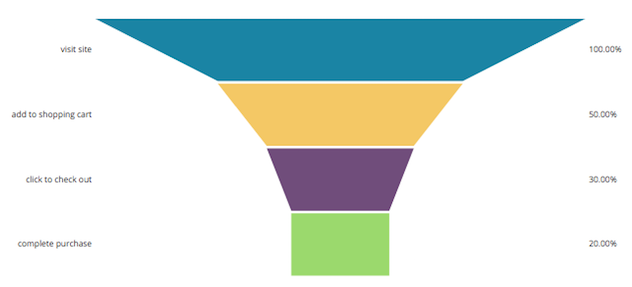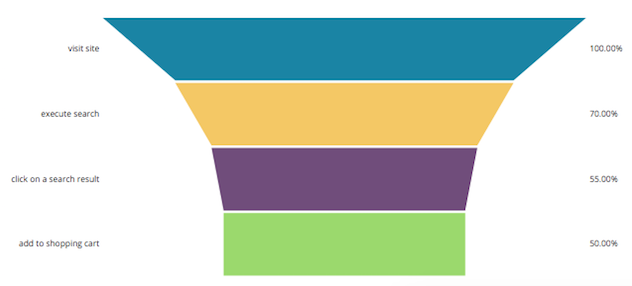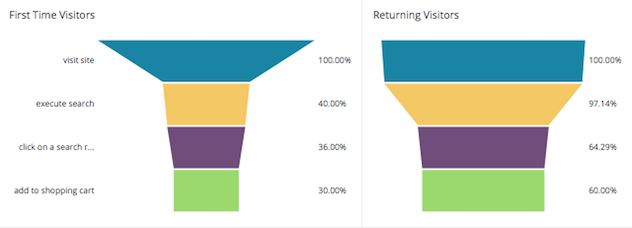A funnel analysis is a very useful tool for Product Managers to understand the flow of users through their website. This tutorial will explain what it is and how to use it.
What is a Funnel Analysis?
A funnel analysis is a method of understanding the steps required to reach an outcome on a website and how many users get through each of those steps. The set of steps is referred to as a “funnel” because the typical shape visualizing the flow of users is similar to a funnel in your kitchen or garage.
For example, consider a fictional e-commerce company whose ultimate goal (often called a conversion or macro conversion) is to get users who visit the site to make a purchase. The steps required to make a purchase on our site are: visiting the site, adding a product to the shopping cart, clicking to check out and completing the purchase. These steps are sometimes also called goals or micro conversions.
Let’s say in a given week the number of users who got through each step are:
| visit site | 1000 |
| add to shopping cart | 500 |
| click to check out | 300 |
| complete purchase | 200 |
A typical funnel chart like the one below transforms this data and makes it easier to visualize how many users are getting through each stage in the funnel.

The visualization makes it clear to see that the biggest drop in the funnel happens right at the beginning - only half of our users add to the shopping cart.
How to Use a Funnel Analysis
A funnel analysis shows you where your users are dropping off along the conversion path. You can use it to figure out where the most opportunity is to make improvements. In the example above, the biggest drop-off occurred from visiting to adding an item to the shopping cart, so it would follow that making improvements in that product experience would have the biggest impact to the overall conversion rate.
Notice though, that there are likely additional steps between visiting and adding to the shopping cart that would help us better understand the drop off point. For a funnel analysis to be actionable, it should include all the key steps necessary to reach a conversion. If there are too many steps to practically visualize in one funnel, you can create partial funnels that zoom in on each step. For example, this is a potential partial funnel for the first step from visiting the site to adding an item to the shopping cart:

Breaking the steps down even further allows us to see that once users click on a search result, they’re very likely to add a product to the shopping cart, so we should focus on the product experience before clicking on a search result.
You can also look at subsets of users and compare their funnels side-by-side. For example, we can break down all of our users between those who are visiting our site for the first time and compare their funnel to the funnel of users who have visited our site before. We may end up with something like this:

We can now see that first time visitors drop off almost immediately - only 40% go on to execute a search. On the other hand, returning visitors almost always execute a search, but the biggest drop off for them is before clicking on a search result.
As you can see, funnel analyses are very useful in helping you understand what part of the product experience has the most opportunity for improvement. You still have to investigate the experience itself and why users are dropping off (through further analysis, user research or walking through the experience), but the funnel analysis gives you a great starting point so you can start the investigations on the areas with highest potential impact.
Conclusion
A funnel analysis is a very powerful tool to help you understand where your users are dropping off on their path to conversion.